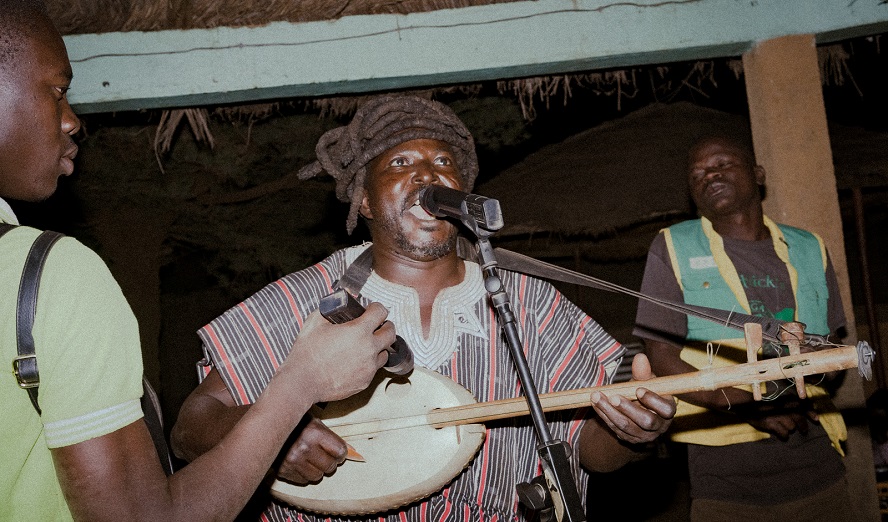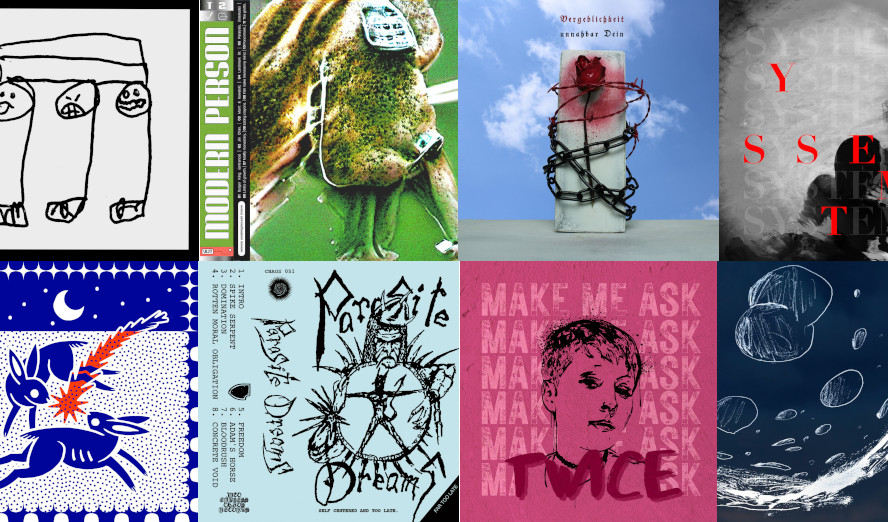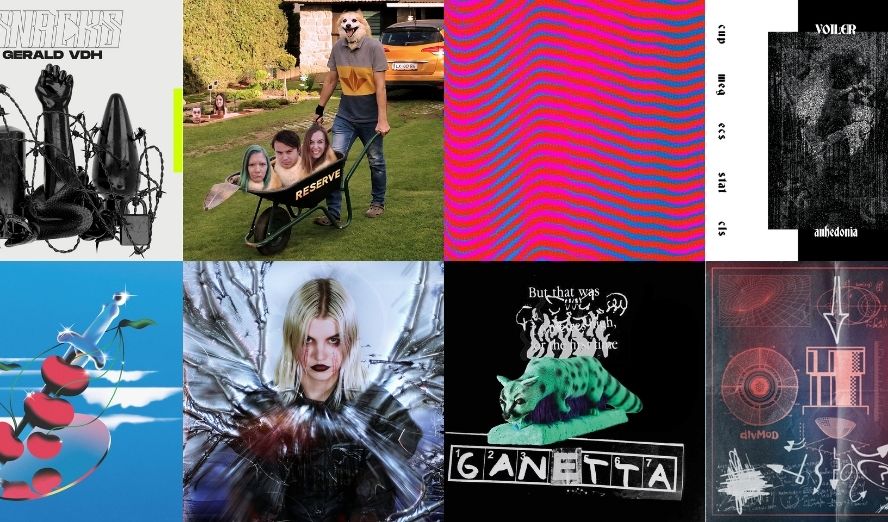In the past, I haven’t particularly been excited at all by Onkyo Music (sort of a post Fluxus musical movement that takes place in Tokyo around the club Off Site and that has been linked to the like of Polwechsel, Radu Malfatti and other »reductionists«, since). But this time I decided I ought to give it new ears or at least a different approach. First of all, and a Japanese composer recently confirmed it to me, the name of the label is pretty ambiguous. They are many other improvisers, trends and practice in Japan so that instead of »from Japan« we’d rather go for »from Tokyo«, but whatever – here is a series of more or less new releases that we’re going to describe in some possible ways.
»Oimacta« by TETUZI AKIYAMA (acoustic guitar) & MARTIN NG (turntable) is a studio recording made in Sydney by Chris Townsend. That is four reasonable droning tracks of about 10-12 minutes, each based on the same sonic-static approach. Long ringing high guitar tones and resonances maintained by both feedback and a bow, and more or less free of any interaction or dialectic. In the first minutes I cant quite tell where the turntables are, they seem
to be laying down a softer and lower drone as well, possibly generated by resonance from the guitar into the turntable.
The guitar sounds like a glass organ but every time when Akiyama is about to give a new impulse to the drone what you hear makes you think he has very little control over the set up. Here comes again my problem with all the scene: As any guitar player who started to trash around with preparations on the instrument, the techniques Akiyama uses are very obvious to me and basically require no particular skills at all (once you have stuffed the instrument you’re done more or less). The whole philosophy of this music being about »don’t act« as a listener you’re too often facing a solid block of emptiness (I find). That point made the overall feeling of this album very nice, very airy and like a little zen garden where one
moves a stone every ten years. In other words and translated into my awful old european eyes that is like the difference between reading Pascal, Casanova or de Sade OR/AND watching one letter of the alphabet painted on the wall for a couple of hours. But of course we can have both experiences, no problem. I still don’t understand why to concentrate on one sound necessarily means to refuse any dialectic. Next is »Tayutauta«, a solo by YUMIKO TANAKA (futozao, shamisen, voice), an alternated play list of loose improvs and traditional pieces. She’s obviously a great player of this plucked string ancient instrument and uses a beautiful range of variations and ornaments on the more traditional pieces. On the freely improvised pieces things go a bit different and we get quite a series of clichés like the »Blowin in the wind and scratching off the skin« kinda stuff. Every early Chadbourne listener have heard that but extremely well developed in the late 70’s already (banjo and acoustic fret less 12 strings). The whole misunderstanding probably lays in »timings« and I fully assume my weakness to sit and go through the whole album at least twice per day. But I’m sure it’s also beautiful, hearted and sincere (just want to get the Mike Skinner thing again rather …). »Time Service« is an album of tubes, alto saxophone and bass clarinet by MASAHIKO OKURA. See Improvised Music from Japan totally works as a label, meaning that you start to see a clear line drawn album after album and that for sure you’ll come back to each artist and give each release it’s proper length and space. »Time Service« is straight away starting loud and strong. A series of deep blown tubes sliced with digital silences and gaps in order for you to feel the difference. The recording itself brings you to hear more than what is being played and the catalogue of sounds each time brought in another way reminds you possibly of Zorn’s »Classic guide to Strategy«. It’s all very advanced playing though maybe a little too raw in the concept but at least I find it a much more mature work.
Departure point Break: If I thought of the Taku Sugimoto/Radu Malfatti album (on IMJ as well) as an extreme object before, I now have to consider it as just a release amongst other brothers and sisters. And now ladies and gentlemen, here comes the controversy: SACHIKO M on »double sine wave in one empty sampler« (you still wonder what is that? well it’s just this!). The title is »Bar« , just like holding the bar. There’s a single track of precisely one hour and nothing else. The usual high frequency drone goes on and on and doubles itself (or adds a second voice?) not very surprisingly at 30 minutes 00 seconds precisely and until the end. The question, and only if there’s any interest to discuss that actually, is whether do we need to read or listen to such pieces? I won’t answer, (just did it, no?). But it has the great advantage to be possibly filed as much in sonic arts than in visual arts. After »Bar« comes »Side Guitar« from TOSHIMARU NAKAMURA on Fender Telecaster or Gibson ES 125. If the short
text by Nakamura himself explaining his long time desire to be a side guitarist which in the 60’s meant in Japan more or less »rhythmic guitarist«, next to the lead guitarist, the album in itself represents very little of that at the end. Four tracks, four tenish minutes drones and although each track is given a precise indication of which instrument is used you barely
can’t make the difference at all. I really like some of it for what it is but after reading the text I seriously expected his musical essay on »Side Guitar«. Obviously we’ll all have to wait. The drones are really fine, very static and anyway extremely close to his no input mixing board work (that makes sense too of course). Overall Improvised Music from Japan is indeed a great label! I may sound a little sarcastic with it but I love the challenge of misunderstanding and not hearing properly what’s being stated or more simply just played. It would not be fair also if I did not tell you how good looking the albums are. Pure paper work and extremely nice prints. And I guess that is part of the process, you can still watch for a while what you don’t hear before waiting for the right moment to listen again. Onkyo very much!
www.japanimprov.com
Masahiko Okura: »Time Service«
Tetuzi Akiyama & Martin NG: »Oimacta«
Yumiko Tanaka: »Tayutauta«
Sachiko M: »Bar«
Toshi Nakamura: »Side Guitar«

Improvised music from Japan
In the past, I haven’t particularly been excited at all by Onkyo Music (sort of a post Fluxus musical movement that takes place in Tokyo around the club Off Site and that has been linked to the like of Polwechsel, Radu Malfatti and other »reductionists«, since). But this time I decided I ought to give it new ears or at least a different approach. First of all, and a Japanese composer recently confirmed it to me, the name of the label is pretty ambiguous. They are many other improvisers, trends and practice in Japan so that instead of »from Japan« we’d rather go for »from Tokyo«, but whatever – here is a series of more or less new releases that we’re going to describe in some possible ways. »Oimacta« by TETUZI AKIYAMA (acoustic guitar) & MARTIN NG (turntable) is a studio recording made in Sydney by Chris Townsend. That is four reasonable droning tracks of about 10-12 minutes, each based on the same sonic-static approach. Long ringing high guitar tones and resonances maintained by both feedback and a bow, and more or less free of any interaction or dialectic. In the first minutes I cant quite tell where the turntables are, they seem to be laying down a softer and lower drone as well, possibly generated by resonance from the guitar into the turntable. The guitar sounds like a glass organ but every time when Akiyama is about to give a new impulse to the drone what you hear makes you think he has very little control over the set up. Here comes again my problem with all the scene: As any guitar player who started to trash around with preparations on the instrument, the techniques Akiyama uses are very obvious to me and basically require no particular skills at all (once you have stuffed the instrument you’re done more or less). The whole philosophy of this music being about »don’t act« as a listener you’re too often facing a solid block of emptiness (I find). That point made the overall feeling of this album very nice, very airy and like a little zen garden where one moves a stone every ten years. In other words and translated into my awful old european eyes that is like the difference between reading Pascal, Casanova or de Sade OR/AND watching one letter of the alphabet painted on the wall for a couple of hours. But of course we can have both experiences, no problem. I still don’t understand why to concentrate on one sound necessarily means to refuse any dialectic. Next is »Tayutauta«, a solo by YUMIKO TANAKA (futozao, shamisen, voice), an alternated play list of loose improvs and traditional pieces. She’s obviously a great player of this plucked string ancient instrument and uses a beautiful range of variations and ornaments on the more traditional pieces. On the freely improvised pieces things go a bit different and we get quite a series of clichés like the »Blowin in the wind and scratching off the skin« kinda stuff. Every early Chadbourne listener have heard that but extremely well developed in the late 70’s already (banjo and acoustic fret less 12 strings). The whole misunderstanding probably lays in »timings« and I fully assume my weakness to sit and go through the whole album at least twice per day. But I’m sure it’s also beautiful, hearted and sincere (just want to get the Mike Skinner thing again rather …). »Time Service« is an album of tubes, alto saxophone and bass clarinet by MASAHIKO OKURA. See Improvised Music from Japan totally works as a label, meaning that you start to see a clear line drawn album after album and that for sure you’ll come back to each artist and give each release it’s proper length and space. »Time Service« is straight away starting loud and strong. A series of deep blown tubes sliced with digital silences and gaps in order for you to feel the difference. The recording itself brings you to hear more than what is being played and the catalogue of sounds each time brought in another way reminds you possibly of Zorn’s »Classic guide to Strategy«. It’s all very advanced playing though maybe a little too raw in the concept but at least I find it a much more mature work. Departure point Break: If I thought of the Taku Sugimoto/Radu Malfatti album (on IMJ as well) as an extreme object before, I now have to consider it as just a release amongst other brothers and sisters. And now ladies and gentlemen, here comes the controversy: SACHIKO M on »double sine wave in one empty sampler« (you still wonder what is that? well it’s just this!). The title is »Bar« , just like holding the bar. There’s a single track of precisely one hour and nothing else. The usual high frequency drone goes on and on and doubles itself (or adds a second voice?) not very surprisingly at 30 minutes 00 seconds precisely and until the end. The question, and only if there’s any interest to discuss that actually, is whether do we need to read or listen to such pieces? I won’t answer, (just did it, no?). But it has the great advantage to be possibly filed as much in sonic arts than in visual arts. After »Bar« comes »Side Guitar« from TOSHIMARU NAKAMURA on Fender Telecaster or Gibson ES 125. If the short text by Nakamura himself explaining his long time desire to be a side guitarist which in the 60’s meant in Japan more or less »rhythmic guitarist«, next to the lead guitarist, the album in itself represents very little of that at the end. Four tracks, four tenish minutes drones and although each track is given a precise indication of which instrument is used you barely can’t make the difference at all. I really like some of it for what it is but after reading the text I seriously expected his musical essay on »Side Guitar«. Obviously we’ll all…
Home / Musik / Review Collection
Text
Noël Akchoté
Veröffentlichung
16.12.2004
Schlagwörter
61
english
sammelrezension

Unterstütze uns mit deiner Spende
skug ist ein unabhängiges Non-Profit-Magazin. Unterstütze unsere journalistische Arbeit mit einer Spende an den Empfänger: Verein zur Förderung von Subkultur, Verwendungszweck: skug Spende, IBAN: AT80 1100 0034 8351 7300, BIC: BKAUATWW, Bank Austria. Vielen Dank!

















